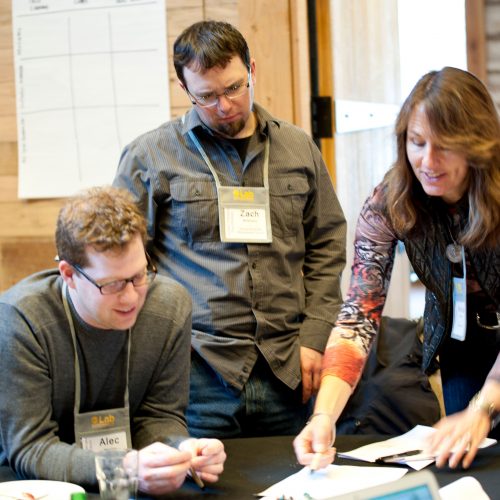
eLab Accelerator 2018
PGE Test Bed
The word SAVE on a digital room thermostat wearing wooly hat.

Project Objective
To test a number of hypotheses and critical assumptions about the potential of flexible loads in the Northwest that are difficult or impossible to obtain. Additionally, the Test Bed will gather data on achievable potential informed by participation and saving rates, test customer engagement approaches, develop experience and program management best practices, moving from direct load control to pricing program to coordinated transactive management of flexible loads and distributed energy resources.
To our knowledge the work of developing a demand response test bed to test demand response at scale has never been attempted. While smaller analogous project may be informative there are nonetheless significant challenges facing the project team these include:
Defining what “at scale” means in context of what is possible or feasible.
How to move the lessons developed in the Test Bed to the utility service territory?
The Test Bed is as much an education, outreach endeavor to partner with PGE customers to develop a new energy paradigm where services flow from the customer and the utility.
-How best is this partnership developed?
-What are the requisite first steps?
-How is a strategy identified and operationalized?
-How can we identify the cost of the endeavor and how can those costs be contained?
Can a risk and opportunity evaluation framework (tool or approach) be constructed to help guide the work of the team?
-Can the risks of the project be defined and can the team find acceptance with the risks?
-Can the benefits of the project be better defined for the broad category of stakeholders:
-PGE Internal/External
-Commission
-ETO/NEEA
-Ratepayers
-Cities
-Customers-
-Customer participants

Team Members
- Josh Keeling – Supervisor Retail Strategy & Development – Portland General Electric
- Jason Klotz – Emerging Technologies Manager Retail Strategy & Development , Portland General Electric
- Elaine Prause – Senior Regulatory Affairs Advisor, Oregon Public Utility Commission
- Rob Pratt – Manager GridWise Program Activities, Pacific Northwest National Laboratory
- Jeff Harris – Chief Transformation Officer – Northwest Energy Efficiency Alliance
- Fred Gordon – Director of Planning and Evaluation – Energy Trust of Oregon
- Peter Passarelli – Public Work Director, City of Milwaukie, Oregon
- Peter Brandom – Director of Management and Sustainability, City of Hillsboro, Oregon
Project Description
PGE is undertaking a unique effort, a national first, to better understand how best to partner with our customers through the establishment of a series of sub-station anchored sites (up to three) to develop demand response and the future of the electric grid. These Test Bed sites will first focus on the development of demand response programs through an engaging partnership with our customers who are served by the targeted sub-stations. In Phase One PGE will research the customers served by each sub-station, engage with those customers and present our current demand response program offerings (possibly with enhanced incentives) in an attempt to establish high participation levels or “participation at scale”. PGE will use data from Phase One to: inform how to structure future demand response program offerings, how best to partner with customers, understand customer participation motivation and comfort levels, how best to partner with technology providers, program implementers, what affect demand response has on the electric delivery system and inform resource planning practices. Phase Two of the project will iterate, offering new demand response products informed from data collected and lessons learned during Phase One. Phase Two may also offer other established smart grid products such as energy storage, transportation electrification, and rooftop solar. These test beds are expected and meant to speed development of smart grid offerings and drive to a more sustainable electric future more quickly than might otherwise be realized.
Progress Made to Date (pre-Accelerator)
- The Test Bed project is guided by a subject matter expert group external to PGE. This group will have met at least twice before eLab. Many of the eLab PGE team members are also on this guidance committee known as the Demand Response Review Committee.
- The Oregon Public Utility Commission in Order 17-386 (see page 9) directed PGE to establish a Demand Response Test Bed. This was a response to PGE’s IRP where the utility initially argued that significant investment in supply side resources needed to be made to meet modeled and anticipated load growth through 2021.
- PGE has worked with a number of internal business groups to identify six candidate sub-stations. The internal group has recently selected three finalist sub-station sites. These substations are slated for distribution automation updates.
- The project is currently undergoing budgeting.
- A decision has been made about using PGE’s present DR programs to establish the Test Bed. This will allow us to establish in a cost effective manner and isolate any additional marketing and outreach dollars. Once the relationship is established with the customer PGE believes that will be able to iterate and offer different programs and incentive structures.
- PGE hopes to sit before the Commission to present a project update and receive advice and feedback. We are hoping to have this meeting prior to the eLab event.
- PGE has aggregated some customer data on the types of customers taking service from each substation and some preliminary analysis has been conducted.
- PGE is drafting an Ex Ante and Ex Post evaluation approach.
Project Background Information
- Commission Order Order 17-386 where the Commission required the development of the Test Bed.
- Commission white paper on the Test Bed. See Appendix A at page 44.
Post-Accelerator outcomes
At Accelerator, the team identified roles of the team’s various stakeholders including defining the value of the project for these stakeholders. The team defined our objectives, the scope of work necessary for implementation, defined success, developed a draft timeline including project stages. With assistance of RMI’s facilitator we identified how to build a narrative that would meet the expectations of the regulator. The team identified the main objective of the project was to define the compelling and sustainable customer value proposition. This then allowed the team to have discussions about how to scale the project and plan a course for long term success. Lastly, the team had in-depth discussions about the complexity of the work in order to level set expectations and understanding. This discussion helped stakeholders understand the depth of work necessary to initiate the project. This discussion also helped the team scope out the programmatic activities to be conducted within the Test Bed. The work conducted to define the project and scope the activity additionally resulted in a narrative which was adopted by the various members of the project team. This narrative was then used to explain the project to internal stakeholders at each of the team members’ businesses or entities. This narrative development accelerated understanding and support for the project among leadership across the different necessary businesses and stakeholders. The support helped the project move more swiftly toward implementation.